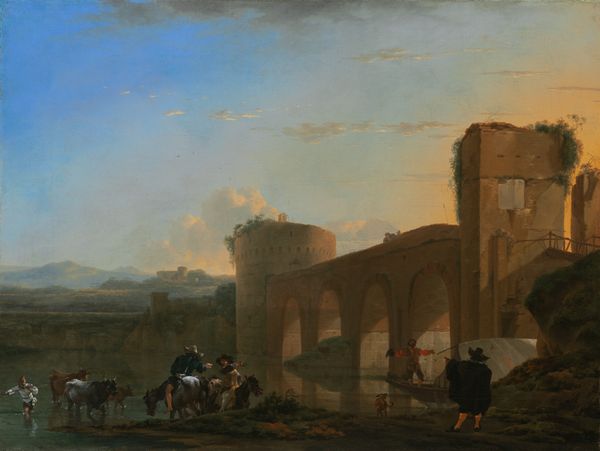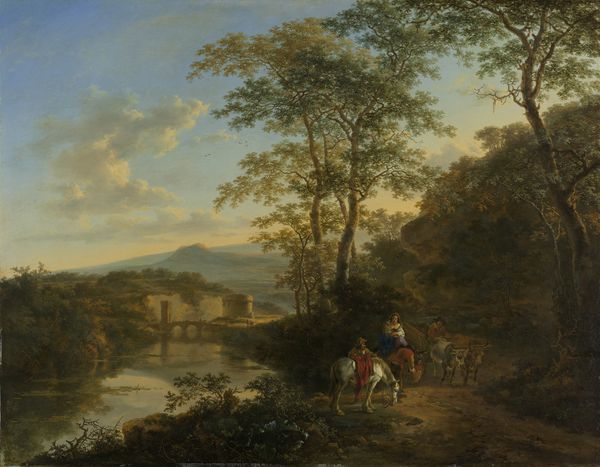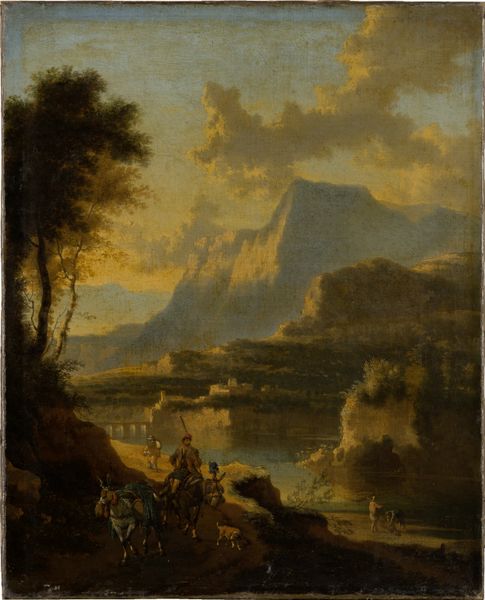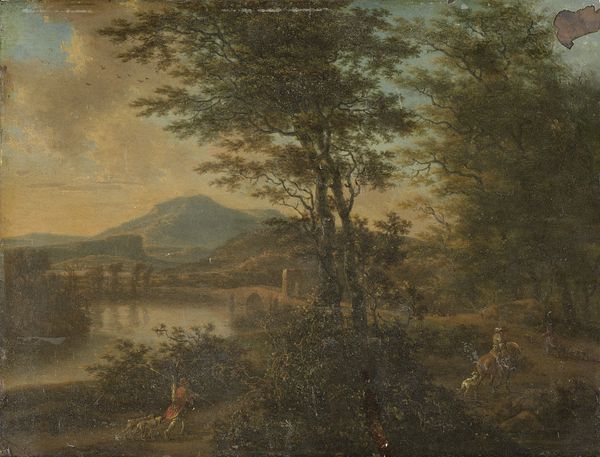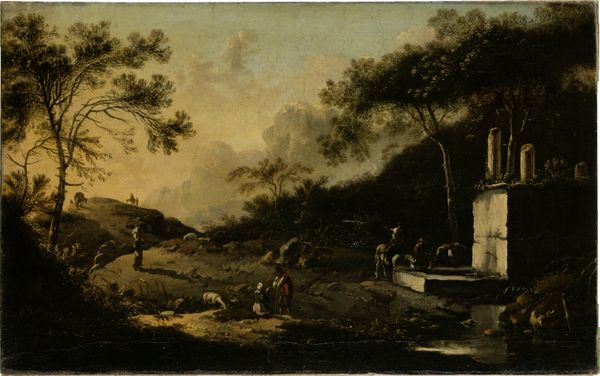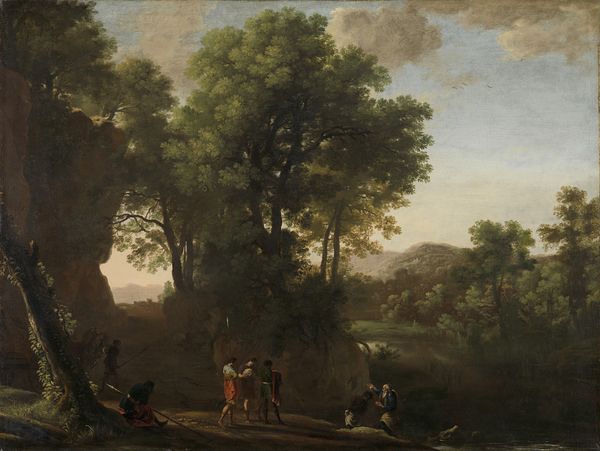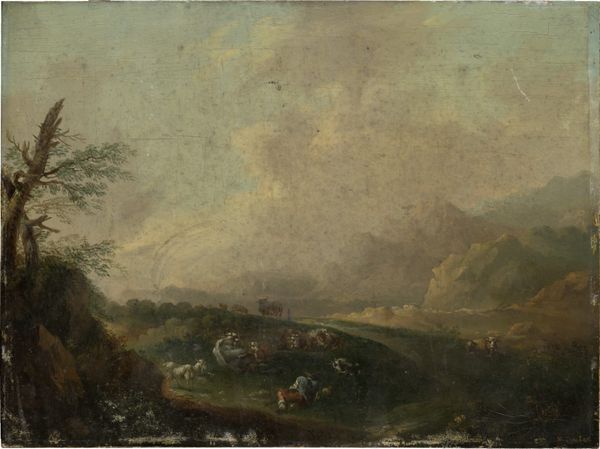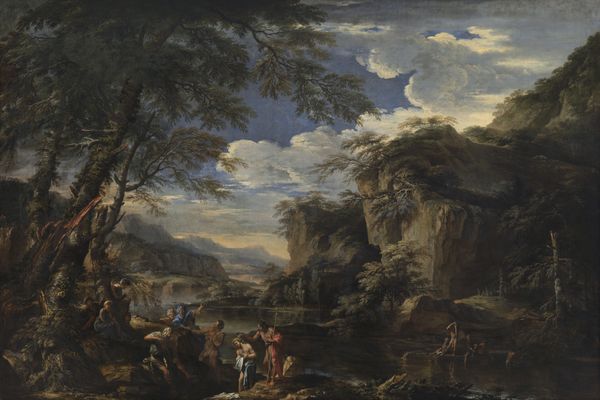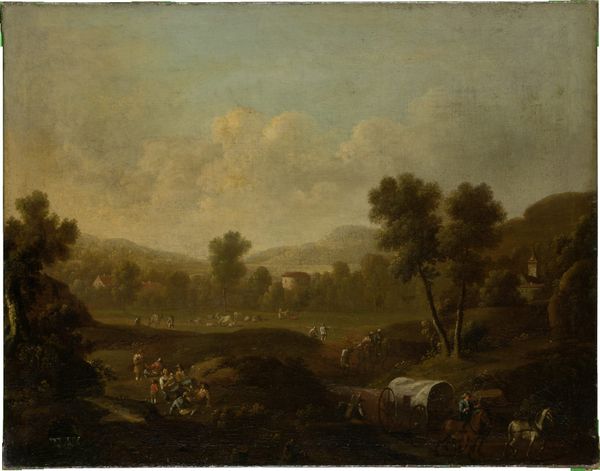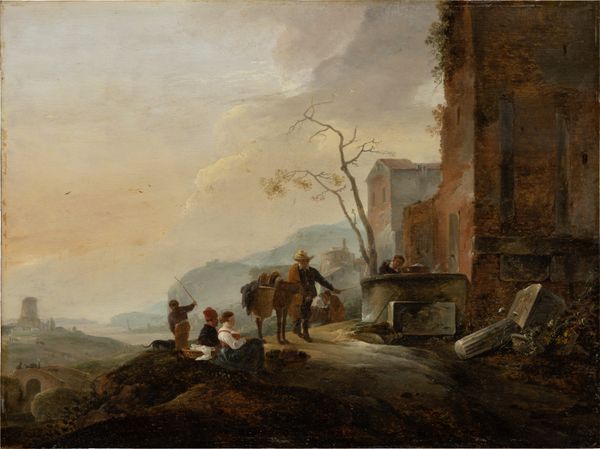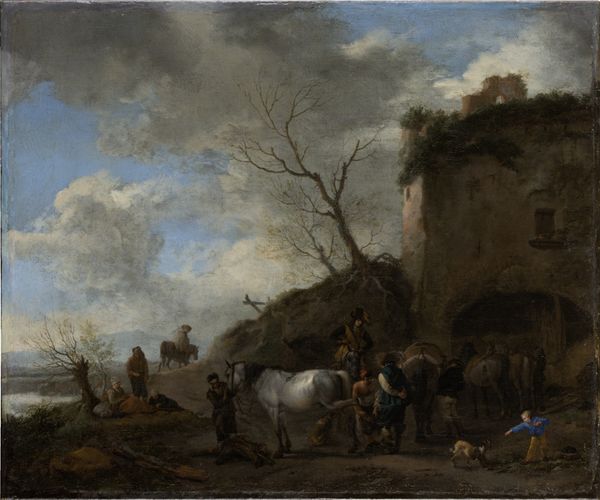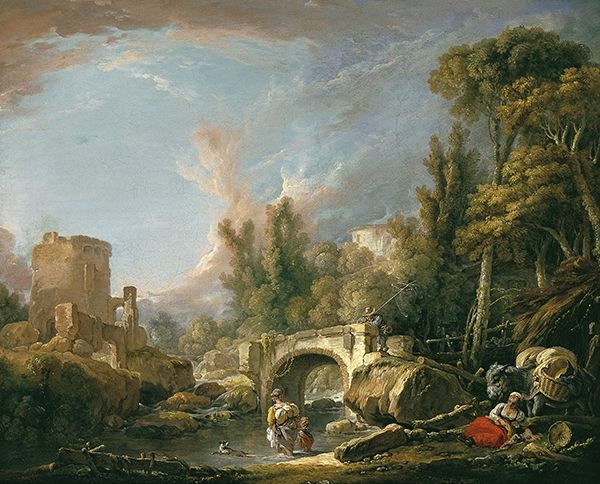
oil-paint, canvas
#
baroque
#
oil-paint
#
landscape
#
canvas
#
classicism
#
history-painting
#
watercolor
Dimensions: 67 cm (height) x 85 cm (width) (Netto)
Curator: The first impression that hits me with Willem Schellinks' "Italian Landscape with Classical Ruins," made between 1642 and 1678, is a subdued drama. The light feels poised, heavy somehow, despite its soft glow. What do you see? Editor: It immediately struck me as a space filled with potent symbolism, and those weighty, tumbled ruins practically scream it! It feels steeped in a longing for a lost era, a bygone sense of order, as represented through the skeletal architecture. Curator: Exactly! Ruins in art are so fascinating – the toppled columns can serve as potent metaphors. They whisper of fallen empires, of the transient nature of power and, on a cultural level, the shift from classical to baroque sensibilities. The decay speaks to the inevitability of change. Editor: Precisely. There's a palpable tension between the glorification of classical forms and the acknowledgement of their ruin. It brings forth interesting social tensions too - an emerging present trying to emerge from the shadows of its forebearers. And even the presence of travelers in the foreground… Curator: Yes, observe how Schellinks subtly positions figures against this monumental decay – they're travelers, ordinary people dwarfed by the scale of the past. Perhaps a visual statement on the ever-evolving landscape of culture. Are they scavengers, perhaps? It is all fascinating when the socio-political factors come to play. Editor: I'm equally intrigued by the water and sky, by that ever present pyramid mountain. It hints at something more enduring than the empires – Nature. Even if cultures rise and crumble, nature stands resolute; maybe offering another commentary on transient grandeur. It seems like Schellinks, in painting it this way, comments about the cyclical rise and fall. Curator: It all speaks to the weight images carry over time and our human need to create these enduring narratives. In their ruins we see reflections of our own ambitions, limitations and, yes, maybe the promise of cyclical rebirth and cultural memory. A poignant blend of historical reflection and the psychology of cultural loss if you ask me. Editor: Beautifully said! So, it all comes together. Schellinks' oil on canvas transcends mere landscape painting. He has crafted a resonant meditation on time, memory, and the ever-shifting tides of human experience through architectural imagery and symbols.
Comments
No comments
Be the first to comment and join the conversation on the ultimate creative platform.

